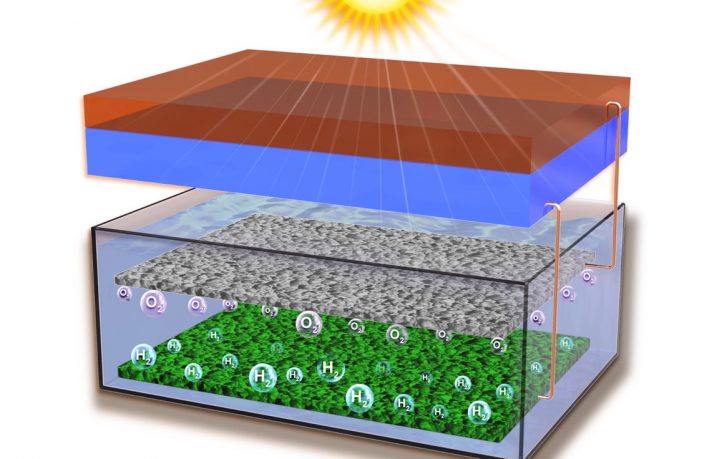- A group of researchers from the Australian National University and the University of New South Wales (UNSW) has developed a new technology for direct solar hydrogen generation (DSTH) which is claimed to achieve a solar-to-hydrogen efficiency of around 20%.
In DSTH projects, the electricity generated by a PV unit is used to directly drive water-splitting redox reactions without the need for an electrolyser or complex power infrastructure. Commercial viability, however, is far from being achieved, despite efficiencies close to 19%, due to the use of expensive semiconductors and noble-metal catalysts. “Our demonstrated system uses inexpensive semiconductors and low-cost, Ni-based catalysts, presenting a great potential for scaling up,” researcher Siva Karuturi told pv magazine. “Further work on [the]design of large scale water splitting cells, together [with the]commercial availability of tandem perovskite-silicon solar cells could ultimately pave the way for industrial production.”
The integrated water-splitting cell developed by the Australian group is based on a “flower-stem” morphology and is planned to rely on a hydrogen evolution reaction (HER) electrode made of NiMo alloy, which is a non-noble-metal-based efficient catalyst for HER due to its appropriate hydrogen binding energy and excellent alkali corrosion. This electrode is then coupled with an oxygen evolution reaction (OER) electrode made of low-cost nickel-iron alloy (NiFE) that, in turn, offers an excellent OER catalytic activity.
DSHT systems are usually built with two or more single PV cells, due to the relatively high voltage requirements of the water-splitting reaction. The demonstrated system, by contrast, is powered by a single, 24.3%-efficient tandem perovskite-silicon solar cell based on a perovskite cell with a power conversion efficiency of 15.3%, an “unprecedented” open-circuit voltage of 1.271 V, a short circuit current density of 17.8 mA/cm-2, and a fill factor of 68%. “The high voltage obtained in our work proved to be decisive in optimal matching of the power generated by the tandem cell and the energy needed by the catalyst electrodes to split water, thereby resulting in high solar-to-hydrogen efficiency,” Karuturi explained.
The surface of the perovskite layer was passivated with an organic cation known as n-dodecylammonium bromide (C12H28BrN), which consists of a long alkyl chain. The tandem cell was linked to the cell catalyst electrodes with wired connections.
The scientists said their analysis demonstrated that the proposed system may achieve solar-to-hydrogen efficiency of 20% at a levelised cost of hydrogen (LCOH) estimated at $4.10/kg. “Improving solely the perovskite cell could enhance the STH efficiency close to 25%,” they concluded. “Combined with future reductions in the PV panel and membrane costs, an LCOH of $2.30/kg-1 could be achieved, presenting a remarkable opportunity to realise cheap renewable hydrogen.”
The findings of the research can be found in the paper Direct Solar Hydrogen Generation at 20% Efficiency Using Low-Cost Materials, which was recently published in Advanced Energy Materials. “To make the DSTH technology practically viable, essential next steps are: reactor optimisation to produce H2 gas at scale in a cost-effective manner, and achiev[ing the]technology readiness needed for market adoption,” Karuturi concluded.
Author: Emiliano Bellini
This article was originally published in pv magazine and is republished with permission.















